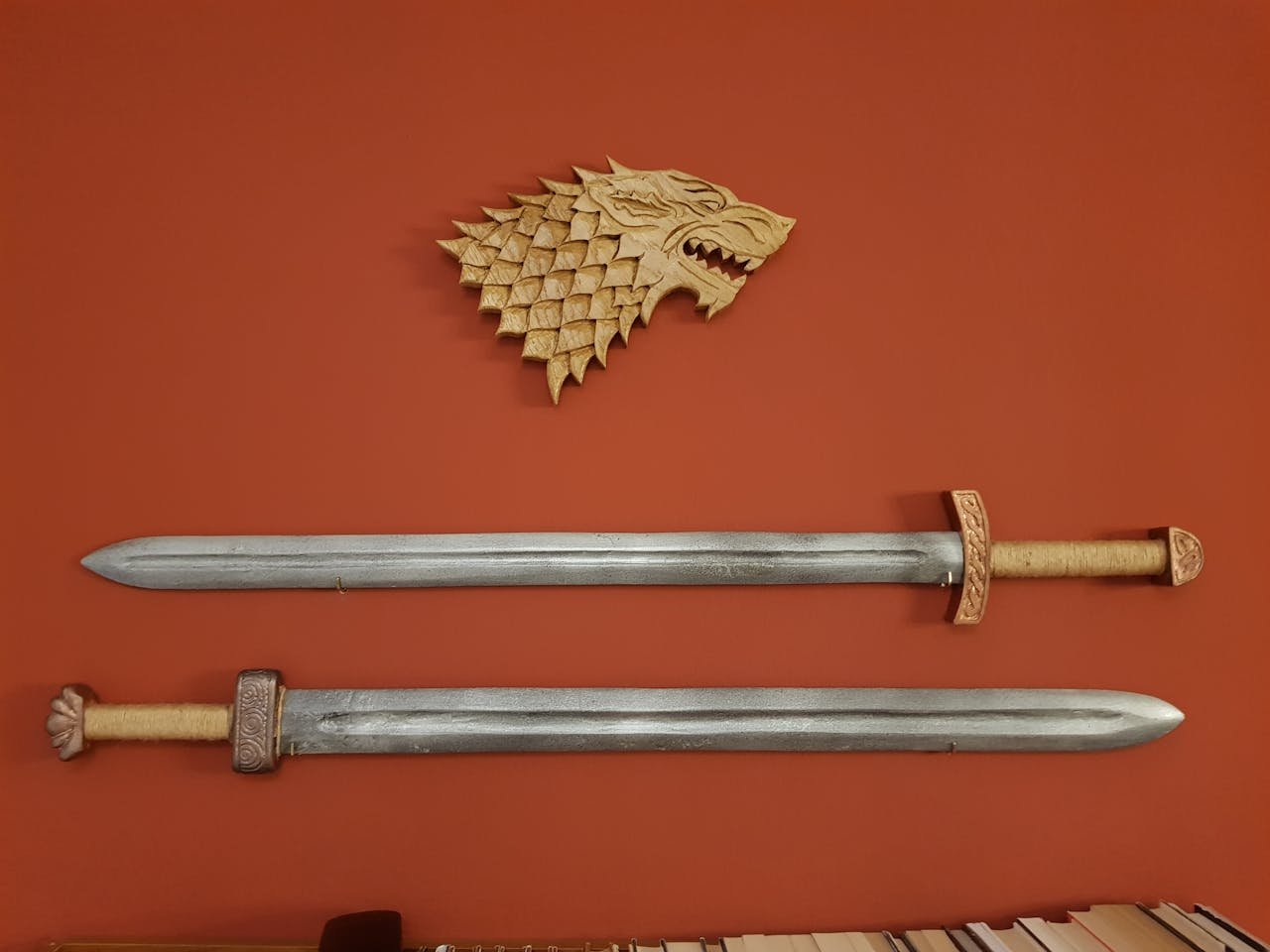Japanese swords have long captivated the imagination of history enthusiasts and collectors worldwide, cherished not only for their combat efficacy but for the artistry, cultural depth, and spiritual essence they embody. One such iconic blade is the Honangen sword, a masterpiece of traditional Japanese craftsmanship known for its exquisite design, rich history, and profound cultural significance.
In this article, we’ll delve into the origins, intricate craftsmanship, symbolism, and enduring legacy of the Honangen sword, explaining why it remains one of Japan’s most celebrated and enigmatic swords.
1. The Origins of the Honangen Sword
Historical Background
The Honangen sword is thought to have been forged during the Kamakura period (1185–1333), which was a pivotal time in Japanese history. This period saw the rise of samurai culture and the development of uniquely Japanese techniques in sword-making. The Kamakura era is often considered the golden age of Japanese sword-making, producing master swordsmiths like Masamune and Muramasa. These craftsmen elevated sword-making to an art form, creating swords known for their durability, strength, and unique beauty.
Although the exact origins of the Honangen sword are not fully documented, it is believed to have been crafted by one of the era’s renowned swordsmiths, likely intended as an heirloom for a noble family or as a ceremonial gift. Such swords were revered as symbols of prestige and often passed down through generations.
Mythology and Legends
The Honangen sword, like many iconic Japanese blades, is surrounded by legends. Though it may not be as widely recognized as the Kusanagi no Tsurugi—one of the three Imperial Regalia of Japan—the Honangen is often celebrated as a sword of mythical beauty and power. Some legends suggest it possesses a spiritual essence, symbolizing the strength and honor of the samurai who wielded it. Others hint that it may have been used in religious ceremonies, believed to offer protection and divine guidance.
2. Craftsmanship and Design
Traditional Japanese Swordsmithing
Creating a Japanese sword is an intensive process that requires skill, patience, and artistry. Japanese swords are renowned for their unique construction, involving techniques such as folding steel multiple times to increase the blade’s strength and remove impurities. Each fold creates layers that produce a visible, intricate pattern on the blade. This process, known as tamahagane, results in a blade that is both resilient and flexible—qualities essential for both ceremonial use and combat.
The Honangen sword is a striking example of Japanese swordsmithing. It showcases the Kissaki-Moroha-Zukuri style, a particular shape of the blade that combines a sharp, double-edged point with a curvature that enhances its cutting power. The design emphasizes not only the sword’s functionality but also the aesthetic qualities that make it a work of art.
Materials and Techniques
The primary material used in traditional Japanese sword-making is tamahagane or “jewel steel,” crafted from iron sand. This type of steel is folded repeatedly to create a blade that is both durable and beautiful. The Honangen sword’s hamon (temper line) is particularly intricate and unique, a result of differential hardening techniques that leave a visible wave pattern on the blade edge. This not only adds to its beauty but also improves its resilience, making the blade capable of withstanding impact.
The crafting of the Honangen sword would have required meticulous attention to detail, with each element reflecting the skill and dedication of its maker. From the precise balance to the detailed hamon, every part of the Honangen demonstrates a mastery of swordsmithing passed down through generations.
3. Cultural and Symbolic Significance
Symbolism in Japanese Culture
In Japanese culture, swords like the Honangen are deeply symbolic, representing honor, loyalty, and the spirit of the samurai. The Honangen sword is more than a weapon—it embodies the virtues of the warriors who wielded it and the values of Japanese society during the Kamakura period. Samurai believed that a sword could hold the essence of its owner, making it an extension of the warrior’s soul.
Furthermore, the Honangen may have been seen as a spiritual object, particularly in Shinto practices, where swords are regarded as vessels connecting the physical and divine realms. As a treasured artifact, it would have been revered as both a family heirloom and a protector of the household, passed down from generation to generation as a symbol of continuity and respect.
The Honangen Sword as a Status Symbol
Swords like the Honangen were often held by members of the noble class or samurai families, symbolizing wealth, prestige, and authority. For a family of high social status, owning a finely crafted sword was a matter of honor. The Honangen would have represented not only martial prowess but also the lineage and legacy of its owners.
Such swords were often gifted as symbols of alliances or given as marks of respect among the noble classes. Therefore, the Honangen’s significance extended beyond its practical use—it was a symbol of social standing and an important part of the family’s heritage.
4. Preservation and Legacy
Modern-Day Preservation
Today, Japan places great emphasis on preserving its historical swords. Organizations like the Society for the Preservation of Japanese Art Swords are committed to maintaining these artifacts for future generations. The Honangen sword may be housed in a museum, where it is carefully conserved to prevent damage from environmental factors. These efforts are crucial in preserving Japan’s history, allowing people to appreciate the artistry and historical significance of swords like the Honangen.
The Sword’s Legacy and Influence on Japanese Sword-Making Today
The legacy of the Honangen sword continues to influence contemporary Japanese swordsmiths, who strive to uphold the standards set by their predecessors. Modern swordsmiths are inspired by the techniques and principles that define traditional Japanese swords, working to recreate the precision and artistry seen in the Honangen.
Today, the Honangen serves as a benchmark in the world of Japanese sword-making. It stands as a testament to the skill, patience, and dedication that Japanese artisans invested in their craft, inspiring a new generation to keep these traditions alive.
5. The Honangen Sword in Popular Culture
Influence on Media and Art
Japanese swords have become prominent in popular culture, appearing in movies, anime, and video games. Swords like the Honangen inspire characters, settings, and narratives, often depicted as powerful artifacts with mystical qualities. These cultural representations highlight the enduring fascination with Japanese swords and their role as symbols of strength, honor, and spiritual depth.
Comparison with Other Legendary Japanese Swords
The Honangen sword is one of many legendary Japanese blades, each with its unique history and significance. Unlike the Kusanagi no Tsurugi—a sword of immense mythological importance—the Honangen is primarily revered for its craftsmanship and the values it embodies. This distinction highlights the variety and richness of Japanese sword-making, where each sword has its own story and place within Japan’s heritage.
Conclusion
The Honangen sword represents the pinnacle of Japanese sword-making, exemplifying the artistry, precision, and cultural depth that define Japan’s feudal era. From its origins in the Kamakura period to its role in modern sword-making, the Honangen is more than an artifact—it is a symbol of honor, resilience, and an enduring legacy of craftsmanship.
The Honangen sword continues to inspire admiration and respect, reminding us of a time when swords were more than weapons; they were expressions of cultural identity and personal honor. For those captivated by the history of Japanese swords, the Honangen offers a glimpse into a world of unparalleled artistry and spiritual depth that continues to resonate across generations.



